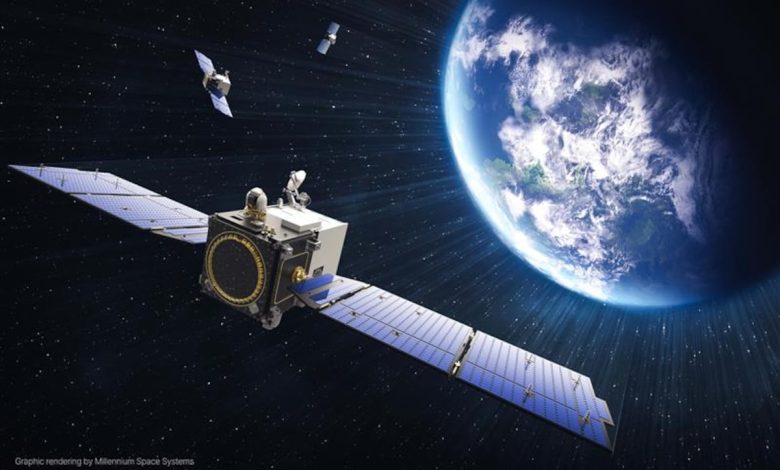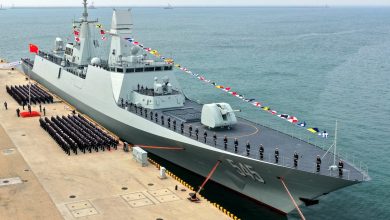Space Force orders more missile-tracking satellites from Millennium

Millennium Space Systems will build six more satellites in the first phase of an effort to develop a constellation of missile-tracking satellites in medium Earth orbit, the Space Force announced Wednesday.
The firm, a Boeing subsidiary, was already on contract to deliver six spacecraft for the Missile Track Custody, or MTC, program, and the new order deal brings its total contribution to 12. The first batch of satellites is on track for delivery in 2026 and the company plans to deliver the second batch of satellites in late 2027, Lindsay Dewald, Millennium’s program manager for the effort, told Defense News.
“We have successfully demonstrated the maturation of our design in all of our review milestones to date, addressed technical concerns that the customer may have and are moving full force into the production and integration test phase,” Dewald said in an interview Tuesday. “The dedicated production line that we’ve stood up for MTC is something that enables us to add additional vehicles and be ready to deliver.”
The $386 million contract is less than the $509 million deal the company was awarded for the first six satellites. Dewald attributed that change to the efficiencies that come with increasing production quantities.
The new order follows Space Systems Command’s decision in May to oust RTX from the program. The company had been on contract to deliver three satellites but struggled to maintain cost and schedule performance.
Speaking Wednesday at SSC’s Space Industry Days event in Los Angeles, Col. Rob Davis praised the program’s quick response to RTX’s removal.
“When one of our two industry partners struggled with delivering on cost and schedule, we were able to quickly pivot and still maintain program progress by turning to the performing vendor,” said Davis, SSC’s program executive officer for space sensing.
The MTC program is one piece of the Space Force’s plan to make its on-orbit missile warning and tracking capabilities more resilient against growing threats from China and Russia. Today, those satellites either reside in geosynchronous orbit — about 22,000 miles above Earth — or in highly elliptical orbit beyond GEO. The Space Development Agency is also launching a fleet of more than 100 satellites in low Earth orbit, less than 1,200 miles above the equator.
Through MTC, the service plans to launch warning and tracking satellites to medium Earth orbit, located between 1,200 and 2,200 miles above Earth, where space sensors can observe a larger area. The Space Force expects to upgrade the satellites’ technology, launching new batches, or epochs, of spacecraft every few years. In August, the service issued a request for proposals for its second MTC epoch.
Millennium’s first 12 MTC satellites, part of Epoch 1, will carry an electro-optical infrared payload built by Boeing that uses advanced sensors to detect and track heat signatures from missile threats. The spacecraft will then use an onboard processing system to analyze that data.
Dewald noted that Millennium is working closely with its suppliers to ensure they can continue to deliver on schedule despite an increased buy from the Space Force. The second batch of satellites, she said, is a “build-to-print” design of the first six spacecraft, which means the focus will be on maintaining a steady production cadence.
“It’s really just continuing the production line — not only at our vehicle level but at our vendor level as well — to deliver on time,” she said. “It’s really building off the relationships that we already have with those vendors to continue to execute additional orders. And our vendors have been working hard to prepare for these additional orders.”
Courtney Albon is C4ISRNET’s space and emerging technology reporter. She has covered the U.S. military since 2012, with a focus on the Air Force and Space Force. She has reported on some of the Defense Department’s most significant acquisition, budget and policy challenges.
Read the full article here






